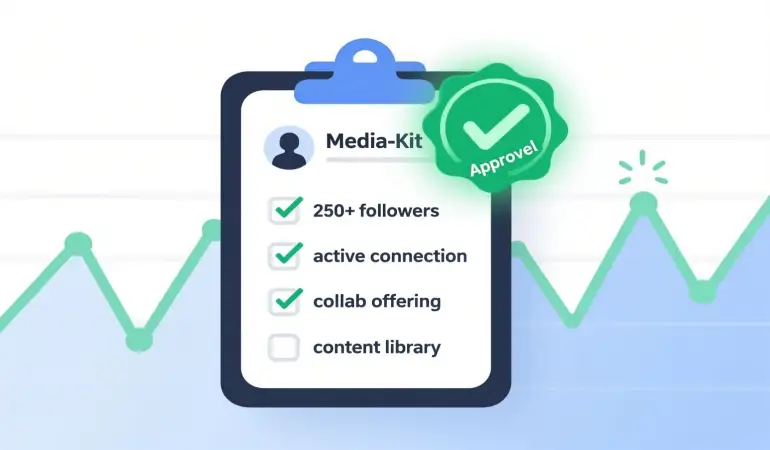Are You Stuck in a Safe Niche? Discover Smarter Alternatives!
Stuck in a safe niche? Discover smarter affiliate marketing strategies. Learn to validate niches, target long-tail keywords, build content clusters, and use SEO tactics with product reviews, comparison pages, and email funnels to boost revenue.
September 30, 2025 00:28
Introduction
Picking a direction in affiliate marketing often feels like buying a ticket for a crowded concert without knowing the opening acts. The common advice—pick a broad sector like health or finance—has little practical value for newcomers. Those arenas are saturated with long-standing publishers, heavy SEO budgets, and aggressive paid search campaigns.
The result: most small sites stall before they gain traction.
Yet the headline that small publishers can succeed by targeting narrower areas is accurate enough. The key question is which narrower areas are worth your time, and why. This piece takes a hard look at that question, weighing practical realities against the optimism of listicles.
Why Niche Selection Matters
Choosing where to put your content and promotion energy defines your chance of return on work. A niche shapes the keywords you chase, the products you can recommend, and the audience you build. A poor pick wastes months, sometimes years.
Focus lets you accumulate authority. Write many specific, useful pieces for the same small audience and search engines reward that topical concentration. Likewise, a well-chosen niche increases the chances that incoming visitors are buyers rather than casual readers.
Small teams benefit most from specificity. When budgets and time are tight, targeted effort beats generic volume.
The Problem With Broad Niches
Broad categories attract heavy competition. Big sites with extensive backlink profiles dominate search results for generic terms. Paid acquisition costs are inflated because advertisers target the same high-value keywords. Attempting to outspend or outrank those incumbents without significant resources is unrealistic.
Broad niches also suffer from fragmented intent. A single keyword like "fitness" hides thousands of distinct queries. Producing content that satisfies that range requires large editorial resources and frequent updates.
One sentence summary:
Broad equals costly, slow, and often unrewarding for small operators.
What Makes A Niche Workable For Affiliates
Several pragmatic criteria determine whether a niche is fertile for affiliate work:
- Clear buyer intent: People should search for terms that indicate purchasing interest—model names, best-for phrases, or comparisons.
- Available merchant programs: Vendors that pay commissions at scale, or marketplaces with affiliate offerings.
- Decent lifetime value: Products that deliver recurring revenue or high-ticket sales ease the economics.
- Manageable competition: Search results should include smaller sites, forums, or weakly optimized pages you could realistically outrank.
- Content diversity: Opportunities for how-to posts, reviews, roundups, case studies, and multimedia.
None of these criteria alone guarantees success. They reduce risk when several align.
A Critical Look At 10 Popular Niches
Education
Education can pay well when you target credentials, test prep, or online course recommendations. Commission rates for enrollment or course signups are often attractive. However, SEO is crowded with content farms and aggregator sites. You need demonstrable credibility or unique course insights to stand out.
Short, actionable testing content works best here.
Gardening
Gardening is forgiving for niche sites because of seasonality and passionate hobbyists. Sub-niches like indoor hydroponics or rare plant care have low competition and dedicated buyers. Affiliate products range from tools to specialty soils. Monetization is moderate per sale but consistent.
Visual content boosts conversions.
Pets
Pet owners spend freely. Niche subtopics—senior dog care, reptile nutrition, or behavior training—offer stable demand. Competition includes retailer blogs and large pet sites, but targeted long-tail queries still provide entry points. Shipping costs and returns can complicate affiliate relationships with physical goods.
Building trust is paramount.
Technology
Tech has high ticket items that yield generous commissions. Reviews for peripherals, smart home devices, and niche software are viable. But the space is fast-moving; product cycles demand constant updates. Heavy competition from major review sites and YouTube channels is a barrier.
If you can produce timely, hands-on reviews, the payoff can match the effort.
Travel
Travel affiliates can earn commissions on bookings and experiences. The industry is vulnerable to external shocks—policy changes, pandemics, and economic downturns. Seasonality and supplier consolidation squeeze margins. Specialized travel like RV living or ecotourism can reduce competition, but expect variability in earnings.
One-off purchases make list-building essential.
Finance
Finance offers high affiliate payouts for credit cards, loans, and investment platforms. The catch: regulatory scrutiny, strict publisher requirements, and intense competition from large sites. The cost to rank is high. If you can niche to a specific demographic or region with tailored financial products, the rewards can be substantial.
Compliance cannot be ignored.
Home Security
Home security is growing, and vendors often run affiliate programs for hardware and monitoring services. Installation complexity and product variety create opportunities for how-to content and comparisons. Consumer trust is a hurdle, so hands-on testing and clear disclosure matter.
Recurring subscriptions are an advantage.
Gaming
Gaming has enthusiastic audiences and multiple monetization channels: hardware, peripherals, digital goods, and subscriptions. However, creators compete with influencer-driven formats—streaming and video reviews—where trust is personality-driven. Written content still wins for deep guides and product roundups.
Community engagement helps retention.
Outdoor
Outdoor gear and activity niches suit affiliate sites because buyers look for specific gear recommendations and trip planning. Sub-niches—mountain biking, kayak camping, or ultralight backpacking—can be low-competition. Seasonality influences traffic, but durable product sales and affiliate partnerships with retailers are attractive.
Field-testing builds credibility.
Parenting
Parenting offers repeat purchase potential—feeding gear, toys, educational tools—and a steady stream of needs as children age. New parent sub-niches provide search intent from first-time buyers. The challenge is trust and editorial voice: parents prefer authentic experiences, not thin promotional copy.
Long-term audience building is rewarded.
Validating A Niche Before You Commit
Do basic keyword triage. Look for long-tail queries with enough volume and demonstrable purchase intent. Use SERP analysis: if results are dominated by encyclopedia-style pages or forums with low monetization, the niche may be poor from an affiliate perspective.
Check merchant options. A niche without reliable affiliate programs is a problem no amount of traffic will fix.
Test with small investments. Create a handful of posts, run modest traffic tests, and measure conversion. A few pages can reveal whether an audience will convert at scale.
Also ask: can you produce distinct content? If every available angle has already been written by dozens of better-funded publishers, pivot.
Monetization Strategies That Actually Work
Affiliate sales are not a single tactic. Combine models.
Product reviews and roundups still convert best for transactional intent. Comparison pages reduce friction when buyers choose between two or three options.
Email funnels increase lifetime value. Capturing addresses from visitors and sending timely offers or seasonal updates converts casual traffic into repeat buyers.
Use content upgrades to push buyers toward affiliate links—downloadable checklists, setup guides, or coupon compilations.
Consider paid ads as a short experiment to validate offers, not as a long-term substitute for organic traffic.
Finally, diversify revenue: display ads can supplement, subscriptions or digital products can capture higher margins, and direct partnerships with niche vendors can yield exclusive deals.
SEO And Content Tactics For Smaller Players
Aim for specificity. Long-tail phrases and buyer-specific queries are where smaller players can get traction. Build clusters of content that answer adjacent questions—how-to, pros and cons, maintenance, and user mistakes.
Quality over quantity. A handful of deeply useful pieces often outperforms dozens of thin paragraphs designed to hit keyword targets.
Technical hygiene matters: site speed, mobile rendering, and clear internal linking will influence rankings. Schema markup for products and reviews improves click-through rates.
Earn links through useful resources: original data, simple tools, or shepherding communities. Guest contributions and targeted outreach to niche forums remain cost-effective.
Multimedia helps. Short videos, annotated photos, and downloadable assets increase time on page and improve conversion.
Common Mistakes And How To Avoid Them
Mistake: Chasing the most popular category without an angle.
Fix: Pick a specific buyer persona and match content to their needs.
Mistake: Monetizing the wrong content types.
Fix: Separate informational content from transactional pages; keep CTAs relevant.
Mistake: Ignoring conversion data.
Fix: Track clicks, funnels, and split-test headlines and layouts.
Mistake: Relying on a single traffic source.
Fix: Build organic search, email, and at least one social or referral channel.
Mistake: Rushing to scale before validating.
Fix: Validate with small experiments and iterate.
Conclusion And Next Steps
The appeal of broad categories is understandable but misleading for small publishers. A chosen focus must meet real-world criteria: buyer intent, available merchant partners, manageable competition, and content opportunities. The ten example areas above each contain promising subfields, but none are automatic winners.
Start small, validate quickly, and refine. If a test shows traction—repeatable conversions and a path to audience growth—invest more. If not, pivot early. The discipline of measured decisions will separate projects that fizzle from the handful that grow into sustainable affiliate businesses.






